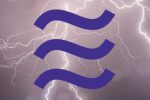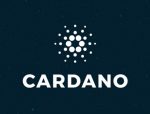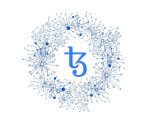MakerDAO ![]() is one of the most promising stablecoin projects (what is a stablecoin?) to date. Soon, their stablecoin token, Dai, will become the first multi-asset backed stablecoin in the world.
is one of the most promising stablecoin projects (what is a stablecoin?) to date. Soon, their stablecoin token, Dai, will become the first multi-asset backed stablecoin in the world.

In this interview, the CEO of MakerDAO, Rune Christensen, talks about tokenomics of MakerDAO, its use cases, future of the project, and much more!
You can also enjoy this interview as a podcast here.
1. What was the vision behind MakerDAO. Why was it created in the first place?
R: I initially got into crypto and Blockchain in 2011. I got into Bitcoin and thought the technology was really revolutionary. But also as I bought a lot of Bitcoin and tried to use it, I actually lost money due to the volatility. And from there I realised that Blockchain isn’t really gonna get any traction or get any mainstream adoption unless you have stability, so people can use it for use cases they actually want. They can use it as regular money, and they can feel certain about it.
2. What are the use cases of MakerDAO?
R: It’s money, so it’s literally used everywhere. But what we’re looking at as a sort of low-hanging fruit, a really obvious use case in the short run is, in particular, remittance. Sending money over international borders is something that’s actually very inefficient currently, and can be made a lot simpler with a stablecoin.
 Wyre, for example, do remittances and they use Dai for it. What they do is, when they’ve sent money from, let’s say, America to China, they just buy Dai in America and then sell Dai in China. And now they magically suddenly have money in China. And they did it very quickly and with very low fees, because there’s no middleman, there’s no banking system they had to interact with when doing this.
Wyre, for example, do remittances and they use Dai for it. What they do is, when they’ve sent money from, let’s say, America to China, they just buy Dai in America and then sell Dai in China. And now they magically suddenly have money in China. And they did it very quickly and with very low fees, because there’s no middleman, there’s no banking system they had to interact with when doing this.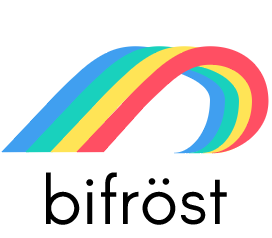
So that’s a really cool use case and we are actually also using that for empowering foreign aid and direct crisis relief through this partnership called Bifröst , where charities are using Dai and a local Bitcoin-style trade network on the ground to actually get cash anywhere in the world in a crisis, so they can get it instantly. They can get it even if there’s very little financial infrastructure and also they can ensure that there is no risk of a government or a bank freezing the money or diverting the funds on the way.
| At eToro you can trade 49 currency pairs, including several cryptocurrencies. Join eToro |
Other than remittance, what we’re looking at is trade finance and supply chain use cases, which is a really huge area for blockchain in general, because it’s very inefficient, and it’s currently run by very old technology, and it’s just something that can be automated but isn’t yet.
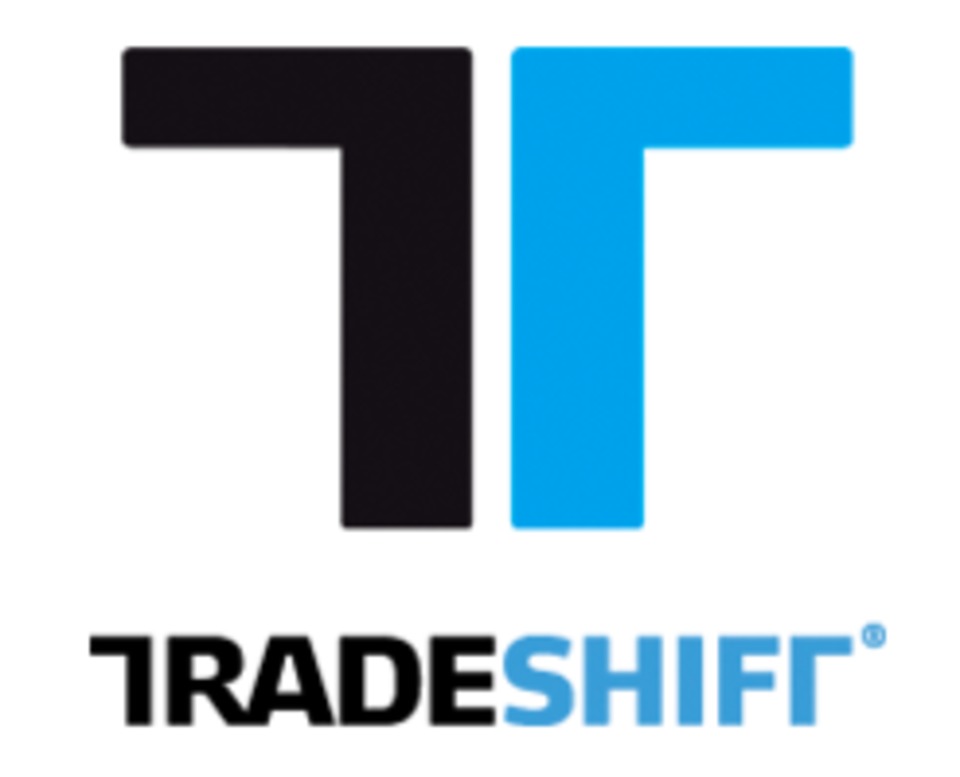 For trade finance, we’re working together with Tradeshift, which is a big supply chain platform, with more than 1.5 million companies using the platform. And a lot of these companies are small businesses, who actually struggle a lot with payment terms. The problem is, if you’re a small business, whenever you sell something to a big company, you typically won’t get paid until after three months. And in those three months, you might have a cash flow issue, where you want to order more parts and build more stuff and sell it, but you don’t have the money, because you didn’t get paid for the last shipment you sold. That’s where trade finance is super useful because you can basically take your invoice and sell it off to investors who then buy it at a slight discount. They get to earn a small return, but they take on all the risk. And then you, as a business, can just run more efficiently. But the problem is, the smallest companies, they don’t have access to this right now, and even if they do it’s typically on relatively bad terms, whereas the terms are kind of set by the financiers because they all know that these small companies are struggling with this issue. We’re using blockchain technology to create an open platform, where it’s just a free market and where we really empower the small businesses because they get to sell to many different businesses who all compete in an open marketplace. What happens is the efficiency and the transparency and some of the inherent fairness of the blockchain ensure that it ends up benefiting everyone equally, and it doesn’t end up becoming a situation where the small business is kind of squeezed by its counterparties.
For trade finance, we’re working together with Tradeshift, which is a big supply chain platform, with more than 1.5 million companies using the platform. And a lot of these companies are small businesses, who actually struggle a lot with payment terms. The problem is, if you’re a small business, whenever you sell something to a big company, you typically won’t get paid until after three months. And in those three months, you might have a cash flow issue, where you want to order more parts and build more stuff and sell it, but you don’t have the money, because you didn’t get paid for the last shipment you sold. That’s where trade finance is super useful because you can basically take your invoice and sell it off to investors who then buy it at a slight discount. They get to earn a small return, but they take on all the risk. And then you, as a business, can just run more efficiently. But the problem is, the smallest companies, they don’t have access to this right now, and even if they do it’s typically on relatively bad terms, whereas the terms are kind of set by the financiers because they all know that these small companies are struggling with this issue. We’re using blockchain technology to create an open platform, where it’s just a free market and where we really empower the small businesses because they get to sell to many different businesses who all compete in an open marketplace. What happens is the efficiency and the transparency and some of the inherent fairness of the blockchain ensure that it ends up benefiting everyone equally, and it doesn’t end up becoming a situation where the small business is kind of squeezed by its counterparties.
3. Why did you choose a crypto-backed model?
R: We actually like to call it a multi-collateralized model, instead of crypto-collateralized model, because when people say crypto-backed, they typically think “oh it’s entirely like dogecoin”. For the stablecoin to be sound, for stability to really happen, what you need is something that’s highly diversified and highly uncorrelated. Meaning it can’t just be high-risk volatile cryptocurrencies. It has to be all sorts of different assets, all these new tokenized assets like security tokens, and basically, all of the asset-backed tokens that are coming out.
So the reason why we chose this model is because what we realized when we set out to create this system to solve the issue of volatility in the blockchain was that on one hand you need the stability and you need this volatility issue solved, but you also need to preserve the most important characteristic of the blockchain, which is decentralization. And that’s where the collateralized model actually delivers because it means that on one hand you can have a fully decentralized system that’s just run on the blockchain, and is just to set up smart contracts. Individual collateral types in that system, they can be centralized tokens, they can be asset-backed tokens, they can be security tokens. But what’s good is that you have a lot of different ones, you have many different ones that come from many different jurisdictions and many different counterparties, so you actually still get the decentralization that you want through diversification. And even if you have a single counterparty that fails, it doesn’t matter because you have so many different ones and the system itself is regulated to be able to mitigate that. That’s a big advantage over, for instance, the IOU model, where it’s just a single counterparty. If that counterparty goes down, which is for instance what we’re seeing with Tether right now, it’s a big problem to the whole system. In our model that doesn’t matter because they would just be one out of thousands, in the long run.
4. Was multi-collateralization always the goal?
R: Yeah, that was always the goal. Our model evolved out of the BitShares model which was a single-collateralized model. And basically what we brought to the table was, we realized what is needed for this to really be sound money was the diversification and proper risk management.

5. Elaborating on the advantages of this model. Because the coin is backed by many assets, it’s more resilient to for example Black Swan events.
R: Yeah. And in fact, it’s the most resilient you can possibly make something. This is actually just a traditional risk management logic. This is actually the way all financial institutions and banks work. They try to become resilient against shocks in the market by being highly diversified and ensuring you don’t put all your eggs in one basket. And that’s basically what we do, except we do it with the power of the blockchain. Instead of a bank where they sort of promise that it’s highly diversified and they promise that they have their shit in order, we actually deliver that on the blockchain. And you can go in and you can verify it directly. You can audit in real time, you can see exactly the assets that are on the blockchain that is in our smart contracts.
Not only do we have that diversification, and that traditional financial scientific expertise, and the logic and the theory to make something properly stable, but we also have that crypto economic guarantee that what you see is what you get. You can order it in real time yourself, you don’t have to trust someone else to say that our things are safe, you can actually go and verify it yourself.
6. Which assets will back Dai in the next iteration?
R: When multi-collateral Dai launches, which we’re aiming for this winter, we are basically aiming to have every single high-quality asset that’s available on Ethereum as collateral. Right now we’re looking at a lot of ERC-20 tokens, obviously, and then a lot of these emerging asset-backed tokens.
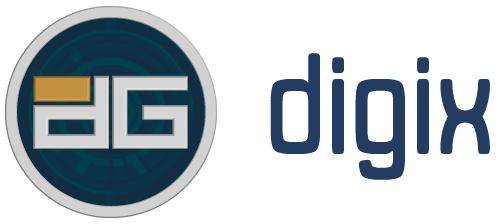 One token that we’ve already announced that we’re going to support is DigiX Gold, which we think is really interesting because it is an asset-backed tokenized gold model out of Singapore. And then there’s a number of pretty high-quality ERC-20 tokens at this point in time. What we’re really looking forward to is the coming surge of security tokens, there will be tokenized stocks out of Europe and out of the US, there’ll be tokenized bonds, we’re seeing that in many different parts of the world. And then there are these more innovative tokenized models, but also primarily out of the US and Europe. And then finally ourselves, we are working on tokenizing trade finance, so basically back to the example with Tradeshift in the supply chain.
One token that we’ve already announced that we’re going to support is DigiX Gold, which we think is really interesting because it is an asset-backed tokenized gold model out of Singapore. And then there’s a number of pretty high-quality ERC-20 tokens at this point in time. What we’re really looking forward to is the coming surge of security tokens, there will be tokenized stocks out of Europe and out of the US, there’ll be tokenized bonds, we’re seeing that in many different parts of the world. And then there are these more innovative tokenized models, but also primarily out of the US and Europe. And then finally ourselves, we are working on tokenizing trade finance, so basically back to the example with Tradeshift in the supply chain.
That’s a big advantage of the blockchain platform we’re making. A platform that will actually also support using the invoices themselves as collateral in the major system.
7. Which assets do you plan to collateralize in the future?
R: It’ll always be crypto tokens, it always has to be ERC20 tokens, they have to be on the Ethereum Blockchain for them to fit into the smart contracts. But the good news is that everything can be made into an ERC20 token. And the only thing that’s preventing that from happening right now, or what’s needed for that to happen, is basically regulatory clarity. Legal clarity and then the right partners out in the real world. And what we’re seeing is, the traditional financial industry is moving in this direction for sure, right? They’re just moving a bit slowly, they’re taking it step by step. But basically, by the end of 2019, I expect that there will be significant assets available in a tokenized form, from pretty much every major asset class. So there’ll be stocks, commodities, bonds, and there’ll even be stuff like real estate and then trade finance. Oh, and then the final thing we also got to support and that we know will be available at launch, is other stablecoins, like the IOU stablecoins. So while we think that there could be downsides to the IOU stablecoin model if you just rely solely on that, because you’re basically putting all your eggs in one basket, it really shines – the IOU model really shines when you combine it together with Dai, because then what you get is an extremely efficient system for moving in and out of crypto, because the IOU stablecoins are so good for onboarding and off ramping, and then combining that with Dai, where you have this long-term stability and resilience in a decentralized setting.
8. How is MakerDAO and its tokens different from other stablecoins on the market?
R: It’s kind of interesting that we are pretty much the only multi-collateral stablecoin that exists, given that that’s the best model. So that’s funny, but maybe that comes down to the fact that we’re three and a half years old, and we really thought about this for years when we decided on our principles. We didn’t just jump on the stablecoin bandwagon. We made it.
There are two other major types of stablecoins other than the multi-collateralized model. One is an IOU token, which is stuff like Tether, it’s Gemini USD, Circle USD, and a whole bunch of others. There’s also a euro, a euro IOU token, there’s Swiss franc, Australian dollars, there’s different IOU fiat tokens coming out and the problem, again, is all of them have the issue that they’re centralized. So it’s basically giving up the biggest advantage of the blockchain. You have to let go of decentralization if you want to build your application on top of these stablecoins. We’re seeing some use from them on for instance centralized platforms, like centralized exchanges, but we’re not really seeing decentralized applications adopting these IOU stablecoins, because then they become centralized. It’s kind of like instead of building your application on the blockchain you’re building your application on the bank. That’s where Dai has a big advantage because Dai is decentralized, but still has this sound, real asset, auditable, and trustworthy backing. And then also what we actually will do is, we will include the IOU stablecoins themselves into the collateral portfolio of Dai and use them as on and off ramps for the system. And just to clarify why someone would ever want to use another stablecoin to borrow Dai, because that may seem counterintuitive. In fact, people doing this, it won’t be regular people. Basically, it’ll only be highly specialized market makers, so it’ll be the kind of traders who specialize in providing liquidity for someone who wants to get in and out of crypto. They will be using CDP’s (Collateralized Debt Positions) and these IOU stablecoins, which give them massive leverage when they’re providing this liquidity. And that means it’ll be a lot cheaper for them to provide that liquidity, which ultimately results in very low spreads and thus makes it almost possible to just move one to one from money in your bank and Dai.
9. Let’s talk a bit more about the future. How is MakerDAO going to develop? What is the dream? How will it look like when Dai becomes mainstream?
R: In the short run what we really hope to see is that when people make new decentralized applications and when people build stuff on a blockchain they will just not have to worry about that issue of volatility anymore. And that means blockchain will suddenly become this very real tool that will be used all over the place, because it’ll be a really easy way to, for instance, build Fintech applications and build some sort of programmable value and transfer system. Also, it’s an easy way for a business to set up a bank account. So if you want to start doing business, you may be like a couple of people who want to do some business, basically anywhere, in particular, if it’s in the developing world, where it’s not as easy to get bank accounts, they’ll just immediately set up a multi-sig with Dai. And that’s going to be a new way to basically do something like that. When you want to do something slightly more advanced with your money other than just hold it as cash, Dai will be the easiest way to do that.
The other thing that we see happening pretty soon is remittances. Remittance use-case is really exploding, so the liquidity of Dai against fiat currencies all over the world will just grow dramatically very quickly because it’s going to be the cheapest way to move money around. And that should result in remittance costs going down and in a more financially connected world, where it becomes a lot easier for people to work abroad, and send money back home. Especially (again) if they’re from the developing world. And in general, that’s really where we see, where we imagine that regular people will see an impact in the short run. It will be in the developing world, where right now there are two billion unbanked people. There are so many people who are either cut off entirely or just don’t really have very good financial services, and that’s where the proliferation of Dai and blockchain technology in general, and smartphones and technology, over the next few years, will start making a big difference.
| At eToro you can trade 49 currency pairs, including several cryptocurrencies. Join eToro |
And then of course in the long run, in the very long run, the way we see Dai is as a kind of centre and backbone for the global financial system. It’ll be a transparent, trustworthy, and neutral foundation that all financial activity will be built upon, and as a result, the global financial system will just be more interconnected, more liquid, more efficient, but also more transparent and resilient, more equal and less politically charged.
This should result in more prosperity for everyone.
10. The issue of crypto-backed model is scalability, as there may be more demand for the stablecoin compared to the collateral. How does Dai handle that now, and how will it handle it in the future?
R: For the very simple example, let’s say during single-collateral Dai when we don’t even have the other collateral types available, basically what the system does is react to an imbalance in supply and demand. So if there are too many people who want to hold Dai and not enough people who want to borrow Dai, the interest rate for borrowing Dai goes down. That’s ultimately how it is dealt with if there’s not enough collateral in the system. The system makes it more attractive to put collateral into it, so it means you can borrow Dai more cheaply. And of course the problem is then that single-collateral, this is a general issue with single-collateral when you only have one collateral type you’re putting all your eggs in one basket, you’re really prone to a Black Swan event, so it ultimately isn’t that scalable. And that’s also why we’ve been careful with how we’ve been rolling it out, we wanted to make sure the people understand this is still technical beta because it’s still just a single collateral version.
And so in multi-collateral, once we have access to high-quality collateral, and even when we have access to, for instance, other stablecoins as collateral, it’ll really be possible to meet the really massive amount of demand. The bond market, for instance, it’s enormous, it’s trillions – you could easily meet hundreds of billions of dollars demand just using bonds as collateral. There’s also stocks and commodities, real estate, there are just so many different types of assets out there. There’s a rush to tokenize assets, there’s a trend of tokenization of everything. It looks like it’s pretty good timing, it really looks like it’s gonna match pretty well with how we expect the adoption of Dai will grow. And ultimately the system itself will regulate this, because it’ll basically be the case that if there’s too much demand for Dai and everybody wants to hold Dai, or when the stablecoin use case is just so big that the system is lacking collateral, the interest rate goes down and that would mean that generating Dai and using CDPs will be the cheapest way to unlock the value of your assets, so it will incentivize people in the traditional system to actually start moving their assets out to the blockchain and to look into CDPs, locking their assets and generating Dai. That’s a way to borrow money out of those funds. So it just automatically balances it through modifying your interest rate.
11. You’ve mentioned a partnership with DigiX, an asset-backed stablecoin backed by gold. Aren’t you afraid this will bring centralisation to the MakerDAO’s ecosystem?
R: What we’re getting at here is this hyper anarchist vision of a future, where everything is on the blockchain like the whole world is decentralized. It’s fundamentally impossible, because value only exists in the real world, most of the time. There are a few examples of where you can create this true decentralized value in the form of reputation, something like the reputation on Ethereum, like the Ethereum stakers being able to guard the network, or reputation of the Oracles in the Augur Network. But in almost all other cases it’s always based on some sort of real value in the real world, or based on some sort of team delivering some sort of value to the network. So, in the end, we have to rely on the existing infrastructure. We need laws and we need legal claims to be able to actually enforce claims about various stuff, but what we can still do in this paradigm is we can have diversification. So instead of relying on just one legal system and one legal claim, which is how the current banking system works. There’s one bank having money, one bank in one country, with one guy promising you the money, and then one government like saying this bank is legit. What Maker will do, is draw on all 200 countries, 200 different legal systems and hundreds of banks. As many different counterparties as is feasible to add to the system. If you look at each individual IOU in the system, each individual asset in the system, that asset may be centralised and rely on a central counterparty and rely on a legal system but the system will be set up so that if one if you look at one particular counterparty, it doesn’t matter if this one defaults or if it is a scam, because that’s basically dealt with through risk management. So the system actually assumes that a portion of the value system also maybe isn’t there right and will have to be covered by the system itself, and that’s then compensated through the stability fee, that’s the risk management. Ultimately, what you get is that we actually take centralization and turn it into decentralization. And arguably that’s also how ultimately Bitcoin blockchain works in general. Because you still have a finite number of nodes, but you just have so many that are spread all out so much all over the world that ultimately you can trust it.
| At eToro you can trade 49 currency pairs, including several cryptocurrencies. Join eToro |
I: So you get all the benefits of centralization, but diversification actually dilutes the risk of it.
R: Yeah, exactly. And that’s both the basic principle of traditional risk management, but also the basic principle of blockchain, where you just have so many nodes that even though technically someone could try to shut them all down at once it just can’t be done in practice, there’s just too many.

